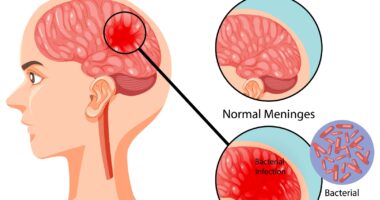In recent years, the world has witnessed a concerning resurgence of measles, a highly contagious viral disease once on the brink of eradication. This increase in measles cases has been closely tied to a decline in vaccination rates, posing a significant threat to public health. Understanding the reasons behind this trend and its implications is crucial for reversing the tide and protecting communities from this preventable disease.
The Rise in Measles Cases
Measles is a highly infectious disease characterized by symptoms such as high fever, cough, runny nose, red eyes, and a distinctive red rash. It can lead to severe complications, including pneumonia, encephalitis, and even death, particularly in young children and individuals with weakened immune systems. Despite the availability of a safe and effective vaccine, measles cases have surged in various parts of the world.
The World Health Organization (WHO) states that measles cases increased nearly 50% from 2017 to 2018. In 2019, the United States reported the highest number of measles cases in over 25 years. Similar trends have been observed in Europe, Asia, and Africa, where large outbreaks have strained healthcare systems and highlighted gaps in vaccination coverage.

The Role of Vaccination in Measles Control
Vaccination is the most effective way to prevent measles. The measles vaccine, often administered as part of the measles, mumps, and rubella (MMR) vaccine, has been instrumental in reducing global measles mortality by 73% between 2000 and 2018. Achieving high vaccination coverage is essential to maintain herd immunity, which protects those who cannot be vaccinated, such as infants and individuals with certain medical conditions.
Herd immunity requires about 95% of the population to be vaccinated. When vaccination rates drop below this threshold, measles can spread rapidly, leading to outbreaks. The recent increase in measles cases can be directly linked to a decline in vaccination rates, driven by several factors.
Factors Contributing to Declining Vaccination Rates
- Vaccine Hesitancy: One of the primary drivers of declining vaccination rates is vaccine hesitancy, defined by the WHO as the reluctance or refusal to vaccinate despite the availability of vaccines. Misinformation about vaccine safety, fueled by misinformation and conspiracy theories, has led some parents to forgo vaccinating their children.
- Access and Availability: Access to vaccines remains a significant barrier in some regions, especially in low-income countries. Lack of healthcare infrastructure, political instability, and logistical challenges can impede vaccination efforts.
- Complacency: In countries where measles has been largely eradicated, complacency can set in. As the perceived risk of the disease diminishes, some parents may prioritize other health concerns or believe that vaccination is no longer necessary.
- Healthcare System Challenges: Inadequate healthcare systems and insufficient funding for immunization programs can result in missed vaccination opportunities. Healthcare providers play a crucial role in educating and encouraging vaccination, but they need adequate support to do so effectively.
Implications of Increased Measles Cases
The resurgence of measles has profound public health implications. Beyond the immediate health risks to individuals, measles outbreaks strain healthcare resources, disrupt routine healthcare services, and lead to increased healthcare costs. Moreover, the resurgence of measles undermines global efforts to control and eventually eradicate the disease.
Addressing the Challenge
Reversing the trend of declining vaccination rates requires a multifaceted approach:
- Public Education: Combatting misinformation and increasing public awareness about the safety and efficacy of vaccines is crucial. Public health campaigns, leveraging both traditional media and social media, can help dispel myths and encourage vaccination.
- Strengthening Healthcare Systems: Investing in healthcare infrastructure and ensuring adequate funding for immunization programs is essential. This includes effectively training healthcare providers to communicate vaccination benefits to hesitant parents.
- Policy Interventions: Governments can implement policies to increase vaccination rates, such as school-entry vaccination requirements and incentivizing healthcare providers to promote vaccinations.
- Global Cooperation: International collaboration is vital to address the global nature of measles outbreaks. Organizations like the WHO and UNICEF are essential in coordinating vaccination campaigns and supporting countries with low vaccination coverage.
Conclusion
The increase in measles cases tied to the drop in vaccination rates is a significant public health concern. Addressing this challenge requires a concerted effort to educate the public, strengthen healthcare systems, implement effective policies, and foster global cooperation. By taking these steps, we can protect communities from measles and work towards a future where this preventable disease is no longer a threat.









